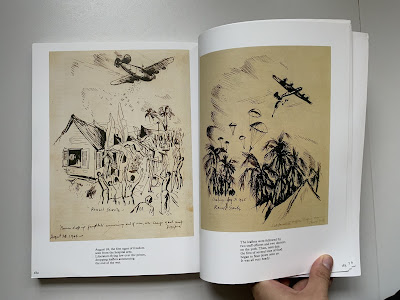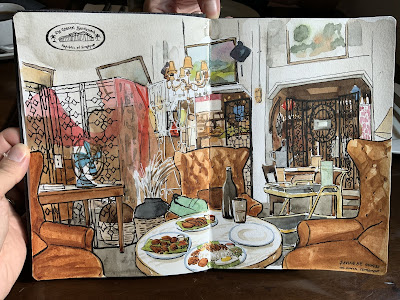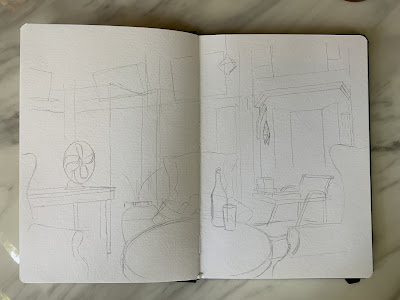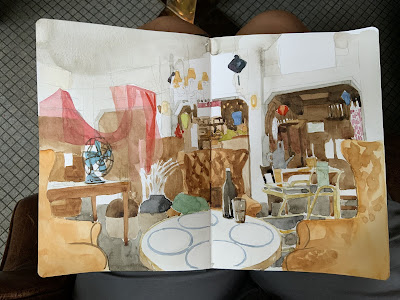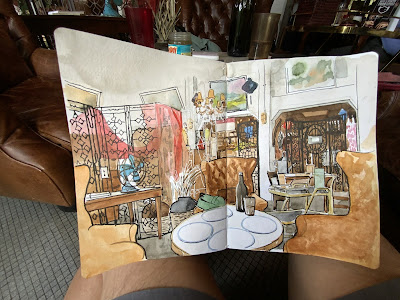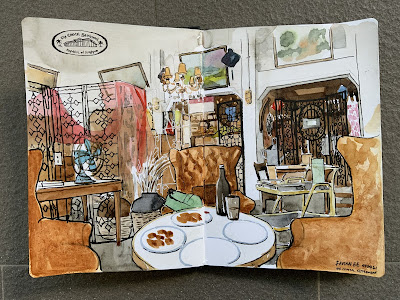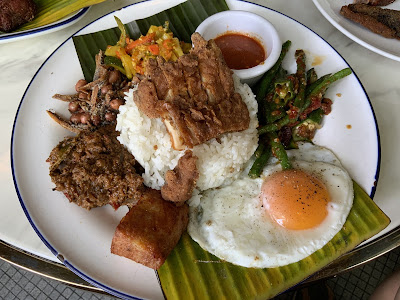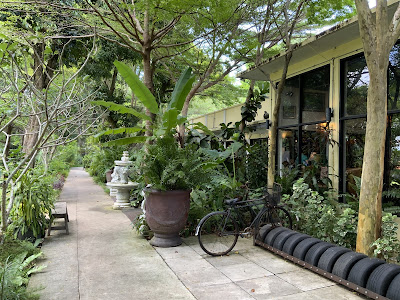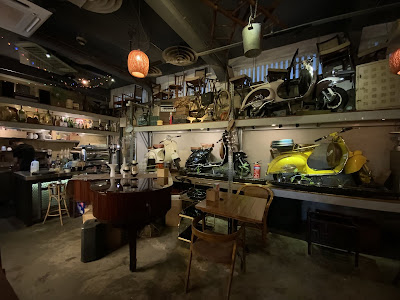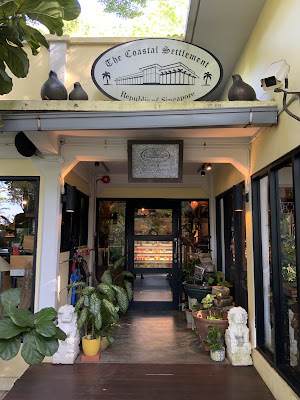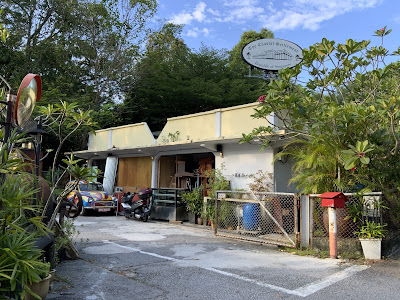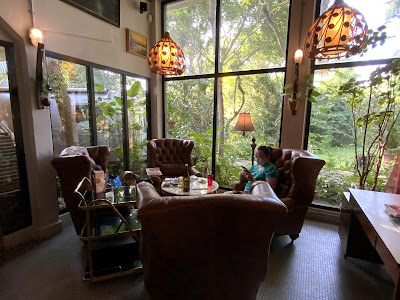I have deep respect for war artists. Such a contemporary is Richard Johnson who has accompanied American troops to the frontline in the Middle East to document scenes of military and combat with little more than paper, pen, and pencil. He stands in a great centuries-old tradition of artists who used their talents to record scenes and experiences under fire and in the most harrowing times. Hence when I came across this book in the library, I borrowed it without hesitation. It is one thing to be engaged to be a combat artist. It is quite another to have documented the experience as a POW in captivity, risking one’s very life just to draw. Searle does just that. And to bring things closer to home, his experience is the experience of my country - Singapore - of just a generation or two ago. Searle was a POW during Singapore’s Japanese Occupation during the Second World War.
Searle was just 19 when he joined the army. A month after he was sent to Singapore, he was captured and spent the next 3 years as a POW. He was interned in Singapore before being sent to work on the infamous Death Railway in Burma. He survived the ordeal and was sent back to Singapore to be held captive at Changi Gaol.
Searle records his experiences as-is, sparing neither the incompetence, brutality nor the humanity of allies and captors alike. He uses a variety of styles from caricature to quick rough sketches to more finely rendered pieces as time and energy allowed. His narrative is personal (do read the text in the photos I’ve uploaded) and even the gaps in his narrative and sketches tell a story - he was unable to do many sketches because of the circumstances.
Vignettes of brutality are interspersed with others of tranquility and humanity, such as a moment when Searle had the opportunity to sketch undisturbed, or when he was picked out by the prison commandant for some personal work, and a conversation revealed that the commander was also an artist. The latter gave Searle some coloured pencils and wax crayons, which he used for some sketches. Another Japanese soldier requested a portrait. Searle shows their humanity through these encounters - these were men forced into circumstances like he was, and some of them would not have been doing what they were had they the choice, in fact, Searle reserves some of his more scathing remarks for the incompetence of the Allied Forces.
The surrender of the Japanese in 1945 did not immediately result in the release of POWs. The generals in Vietnam and Singapore were bent to continue figting and rumours floated about that all captives would be killed. Thankfully for Searle (and for us), both he and his sketches survived.
We owe a debt to courageous men like Searle who risked their lives to give us visuals of such a dark time in our global and national history. It took tremendous courage to create and hide these incriminating sketches from his captors, and publish them years after the ordeal. As an endorsement on the back cover reads, “This book should never be out of print”. Let no one say that artists are non- essential. We are all the richer for the brave strokes of these men.


















